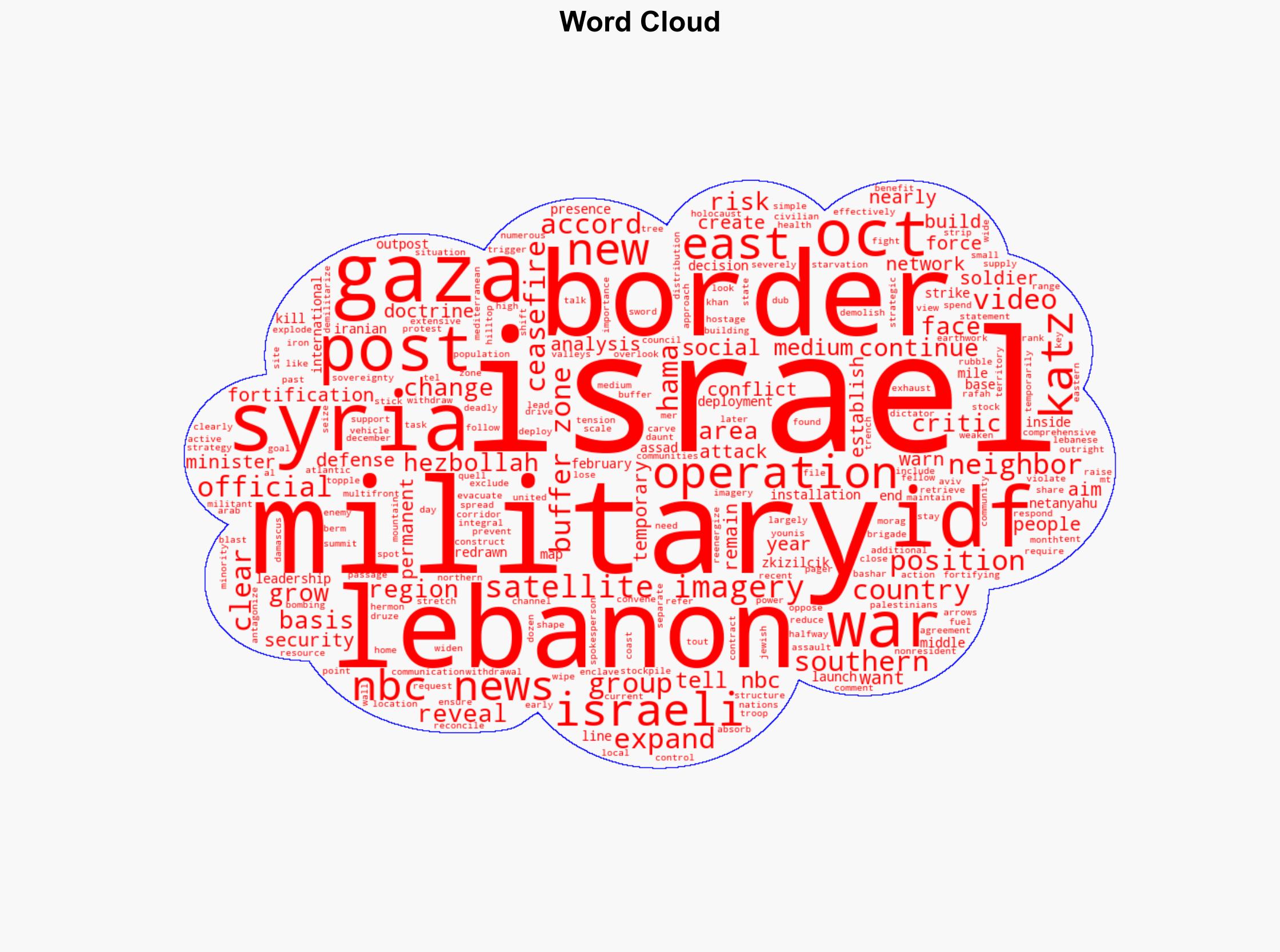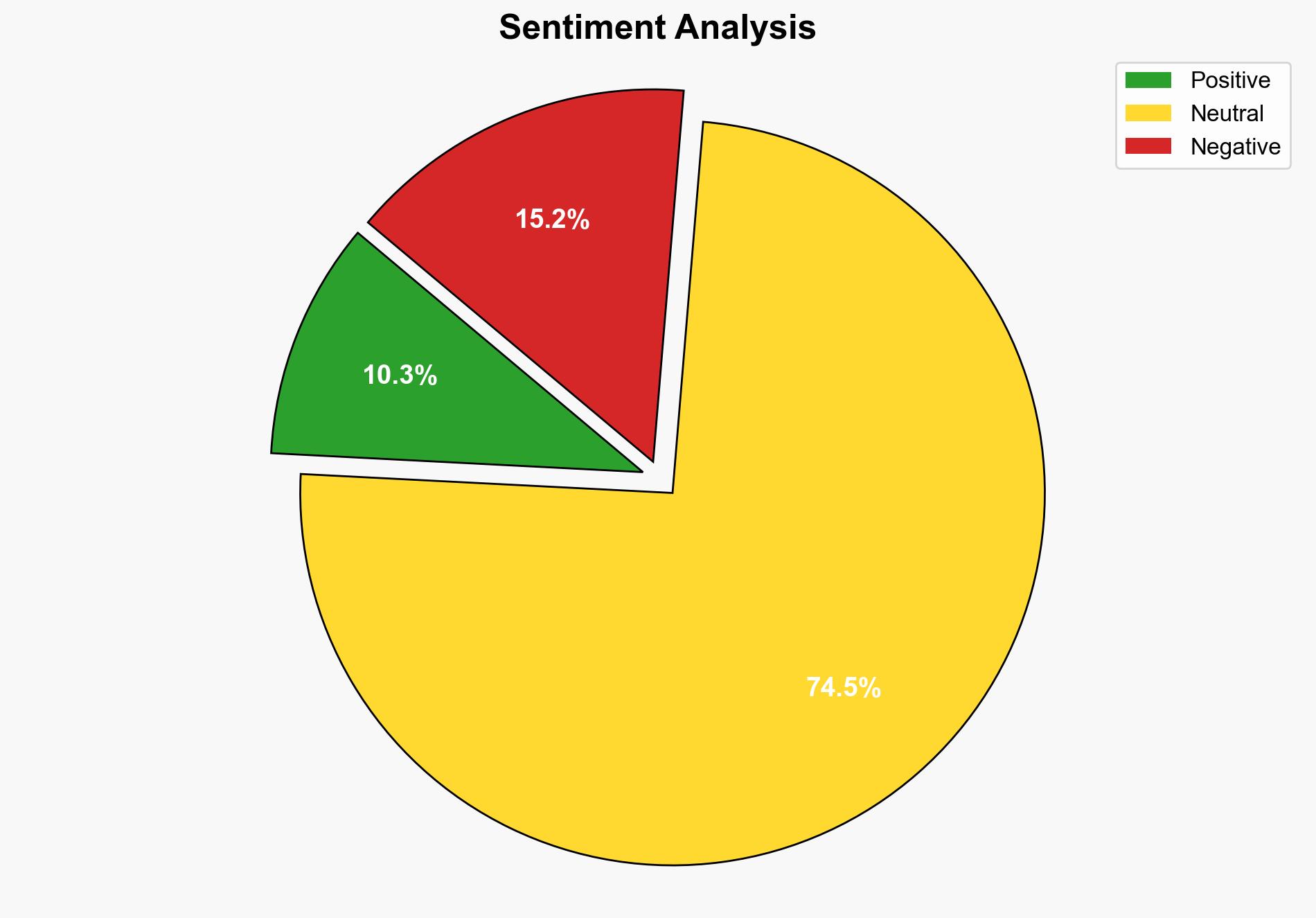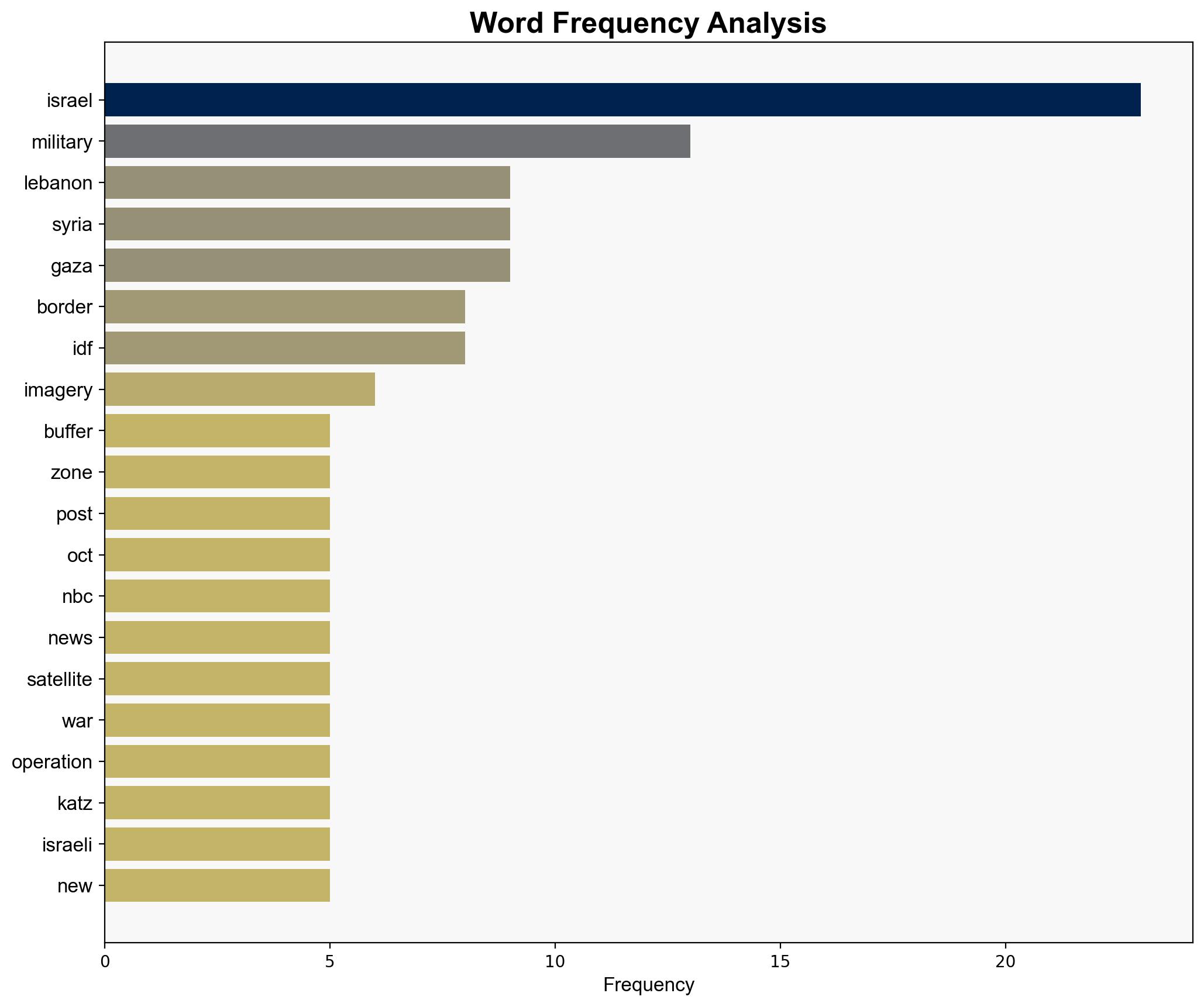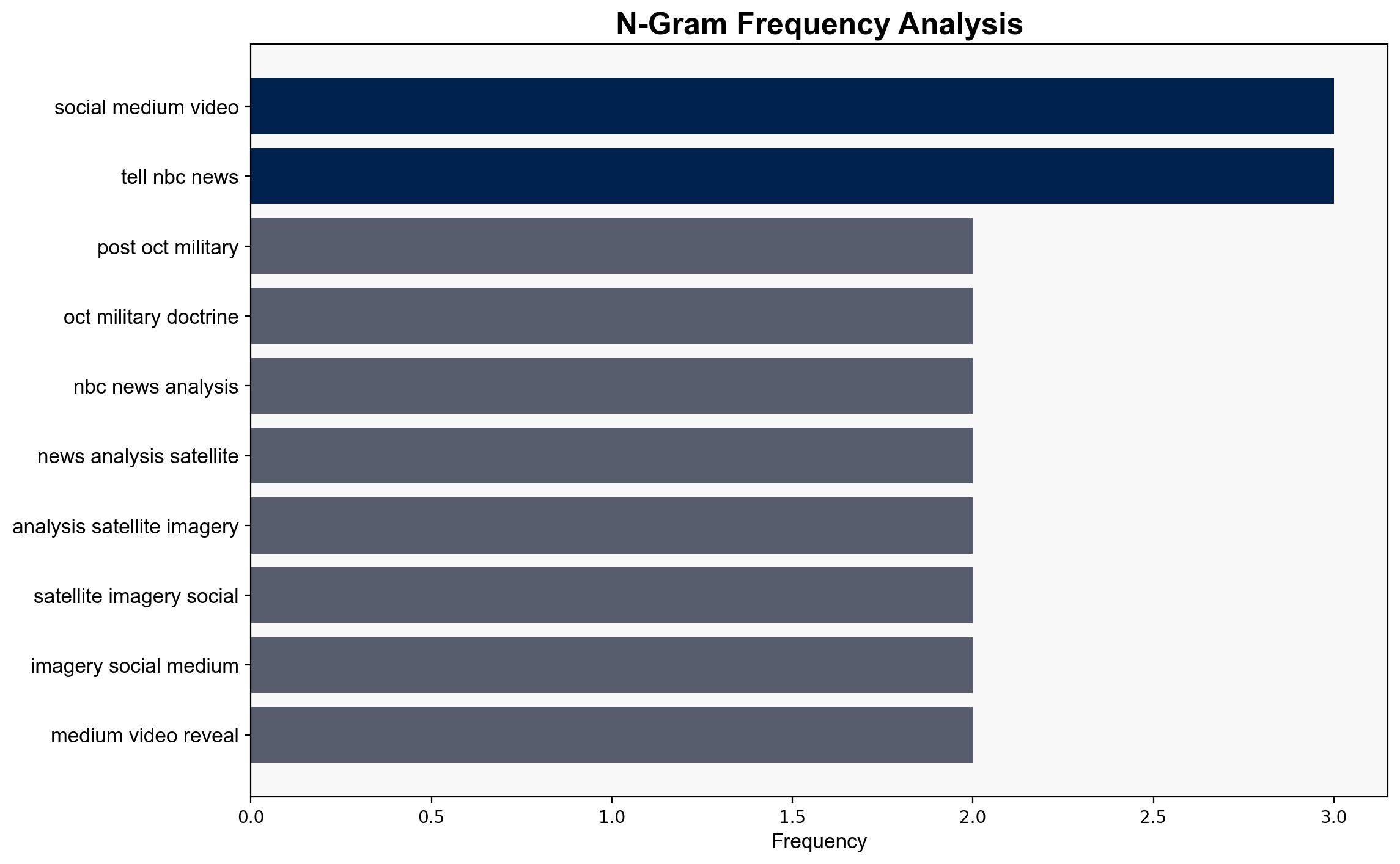Israel grows buffer zones along its borders as part of post-Oct7 military doctrine – NBC News
Published on: 2025-08-09
Intelligence Report: Israel grows buffer zones along its borders as part of post-Oct7 military doctrine – NBC News
1. BLUF (Bottom Line Up Front)
Israel’s expansion of buffer zones along its borders with Lebanon, Syria, and Gaza is a strategic move to enhance security and prevent militant groups from establishing positions close to its borders. The most supported hypothesis is that this is a defensive measure aimed at stabilizing border security following recent conflicts. Confidence level: Moderate. Recommended action: Monitor developments and engage in diplomatic dialogue to address regional tensions and potential sovereignty violations.
2. Competing Hypotheses
1. **Defensive Strategy Hypothesis**: Israel’s buffer zone expansion is primarily a defensive strategy to protect against future attacks from militant groups like Hamas and Hezbollah. This is supported by the construction of fortifications and military bases, as well as the historical context of recent conflicts.
2. **Territorial Expansion Hypothesis**: The buffer zones are a pretext for territorial expansion, allowing Israel to exert control over strategic areas beyond its recognized borders. This is suggested by the permanent nature of some military installations and the potential violation of neighboring countries’ sovereignty.
3. Key Assumptions and Red Flags
– **Assumptions**: The Defensive Strategy Hypothesis assumes that Israel’s actions are purely for security and not for territorial gain. The Territorial Expansion Hypothesis assumes that Israel has long-term intentions to control these areas.
– **Red Flags**: Lack of clear communication from Israel regarding the temporary or permanent nature of these zones. Potential bias in interpreting satellite imagery and social media videos.
– **Missing Data**: Detailed diplomatic communications between Israel and neighboring countries regarding these developments.
4. Implications and Strategic Risks
– **Regional Tensions**: The expansion of buffer zones could escalate tensions with Lebanon, Syria, and Gaza, potentially leading to military confrontations.
– **Sovereignty Concerns**: Neighboring countries may perceive these actions as violations of their sovereignty, leading to international diplomatic disputes.
– **Economic Impact**: Prolonged military presence could disrupt local economies and humanitarian conditions, especially in Gaza.
– **Geopolitical Dynamics**: The situation could affect alliances and regional power balances, particularly involving Iran and its proxies.
5. Recommendations and Outlook
- Engage in diplomatic efforts to clarify intentions and reduce tensions with neighboring countries.
- Monitor military developments and prepare for potential escalation scenarios.
- Scenario Projections:
- Best Case: Diplomatic resolutions lead to a reduction in military presence and stabilization of borders.
- Worst Case: Escalation into broader conflict involving regional powers.
- Most Likely: Continued military presence with periodic skirmishes and diplomatic tensions.
6. Key Individuals and Entities
– Israel Defense Minister: Israel Katz
– Groups: Hamas, Hezbollah
7. Thematic Tags
national security threats, cybersecurity, counter-terrorism, regional focus




